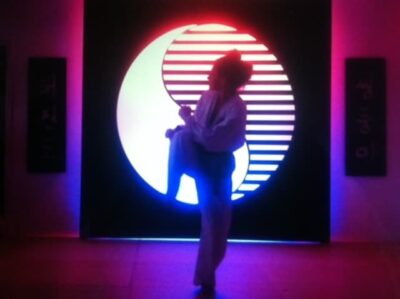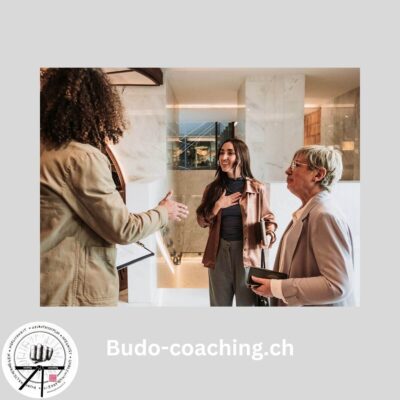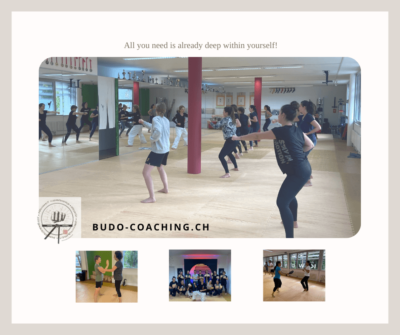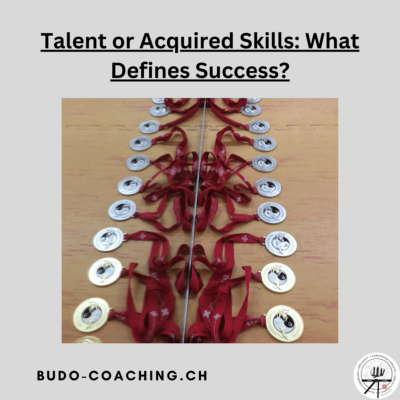Open up to your world of possibilities Do you find yourself constantly worrying about what…

Coping with stress with Budo: A path to mental resilience
In our modern society, stress and strain are omnipresent. Even among young people. We became aware of this once again during a series of workshops with several high school classes. In this context, we dealt intensively with the topic of resilience and stress management. The focus was on the connection between martial arts and mental resilience.
The way to resilience in the Budo world is to work with body and mind, balancing between the driving yang and the calming yin.
During our workshops we not only shed sweat, but also gained valuable insights. Pupils face a variety of challenges and are learning to deal with the demands of growing up. Many of them wish for a little more resilience to have a better grip on fears, exam stress and time pressure. Some are naturally equipped with a little more resilience, others need to learn and practice how to draw strength from themselves, not to give up too quickly or to be driven by external circumstances.
Strengthen mental resilience!
Martial arts offer a unique opportunity to train your own resilience and stress management. The training not only builds physical skills, but also develops mental strength. The movements and exercises require concentration, speed and endurance, which leads to an improvement in physical fitness. At the same time, however, practice develops important skills for coping with stress.
In a Budo workshop, the participants learn that it’s not just about hitting hard, but rather about directing your own energy in the desired direction.
- What is my goal?
- What resources do I have to achieve my goal?
- What is the best strategy to get there without creating too much pressure or, on the other hand, stagnating into passivity?
This requires a high degree of self-confidence and mindfulness.
By learning to regulate and use our energy in a targeted manner, we can reduce stress and make better use of our resources. The physical work helps to consciously perceive the body, reduce tension and find stability.
Yin and Yang for inner stability
In martial arts, the concept of balance is central. Yang represents the active, driving force the energizing fire in us. Yin, on the other hand, symbolizes the calm side, which provides relaxation and recreation. These two forces exist within each of us and must be kept in balance to build resilience.
If the yang becomes too dominant, there is a risk of overload, stress and even burnout. When yin predominates, there can be passivity and lack of energy. The aim of the training is to keep these two poles in harmony.
Through the exercises and practices, we are trained to consciously feel and regulate both the yang and the yin. For example, while performing martial arts and katas (fixed sequences of movements), we experience the yang in its dynamic and powerful form. Here we learn to focus our attention and to use strength and striking energy at the right moment. At the same time, we become sensitive to the signs of overexertion and stress.
Through conscious breathing techniques and targeted relaxation phases, we find space for the Yin. These phases of rest and relaxation help to replenish and regenerate energy reserves.
(Read also: Relax and recharge: how do you get your energy boost?)
Use your resources at best – strain and recover, clench and release!
Striving for a balance between yin and yang also has a metaphorical meaning for everyday life. By being aware of how we use our energy and how we organize our recovery periods, we can find a better balance between activity and rest. This allows to reduce stress levels and increase resilience. ( Find out more Services)
It is therefore important to perceive the needs of our body and mind.
Develop confidence and flexibility!
Another important component of coping with stress is developing self-confidence and inner stability. Those who are aware of their own abilities and feel confident are better equipped to face stress and challenges. In martial arts we are encouraged to test our limits and surpass ourselves. By overcoming physical and mental obstacles, we gain self-confidence and learn to face challenges realistically without overestimating or underestimating ourselves or others.
A solution-oriented way of thinking is the basis for this. When confronted with unforeseen situations, such as in a fight, quick thinking and adaptability are required. These skills are valuable in dealing with stressful situations in everyday life. Those who learn to act flexibly and in a solution-oriented manner are able to deal with changes more easily and can adapt to new situation.
Psychological resilience is a fundamental skill that helps us survive in an ever-changing world.
Self-reflection, realizing and doing
During a sporting activity, we are usually aware of when we are tensing and relaxing our muscles. We also aware that we need to add new exercises, behaviors, routines and adjustments to our training to become more agile, stronger, more balanced and flexible over time.
The same should apply to dealing with psychological stress. Surprisingly, many are not so aware of the stressful state they are in and what they need: Dealing with stress therefore begins with self-confidence.
- What happens to me when I’m stressed?
- What positive stress drives me and what/ who or which situation drains me?
People do have a common physiological response to stress, but the stress each experience is unique and individual. What triggers a stress reaction in one person may be meaningless for another. Equally, our methods of recovery are unique. So each and every one should spend some time in identifying what interactions consistently cause them stress and what time of day they feel most energetic. The more we know about ourselves and how our body functions, the better we perceive our body signals, the better we can manage stress and use stress reactions to our advantage.
We were asked by the teacher to give their senior classes – young people who are about to graduate school- impulses for their path to adulthood and mental resilience is one of the crucial skills in dealing with changes and challenges.
Treasure these four key messages
1️⃣💡Be open and widen your scope
Expand your scope of action and allow new possibilities.
Is there something you’ve always wanted to try but haven’t done for fear of not being good at it? Try it! Growth can only occur outside of your own comfort zone. From this perspective, resilience shows in body and mind as flexibility-competence; flexibility enables us to face new things, adapting to new circumstance but at the same time keeping centered.
Observe yourself and ask yourself:
- Do I refrain from learning or doing something for fear of embarrassing myself?
- Do I have the feeling that defeat marks me as a failure?
The Budo way is a way of learning, of development, of falling down and getting up again, so that hindrances become learning experiences at the same time. Likewise in life.
2️⃣🧐 Search for solutions
Do I immediately think “I can’t do this” when a new task becomes challenging?
Keep going, even when it’s tough. When you tackle and overcome challenges, you learn and gain a sense of achievement and contentment. When we act and look for solutions ourselves, we build our resilience muscles. When you realize that you are making a difference with your actions, your self-confidence will also increase.
3️⃣👉Let go – look ahead!
Is there a negative experience in your past that shaped you? Don’t repress your emotions, they are all important: including anger, resentment and frustration; accept them but do not dwell in any emotions. A defeat or negative experience does not define you! You decide who/what annoys you. No matter what happens outside, the weather, conflicts, toxic people – how you react, how much energy you invest, is always your decision.
Consciously change your body stance and inner attitude! Look ahead, starting from where you are.
Focus on the questions: What do I learn from this experience? How can I grow from it? What resources are available to me, how can I proceed? Am I in the right environment, am I surrounded by people who support me? Who else can I include? What can I do now?
4️⃣💪From knowledge to action
It sounds so easy – but how do I do it?
Between saying and doing is the sea, I often heard from my parents as a child. In our mind, there are many things that make sense, but we sometimes find it difficult to apply our knowledge. Not because it’s hard, but because we think it’s hard. So, when the students ask us how they can implement what they have learned, we always answer the same thing: just do it, quit talking!



